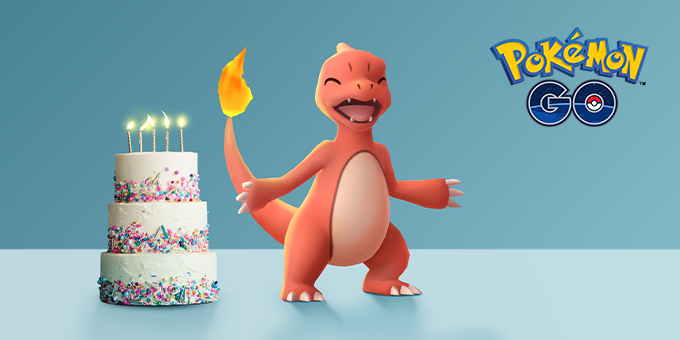#FEATURE: Celebrating The 5-Year Anniversary Of The Pokémon Go Phenomenon

“#FEATURE: Celebrating The 5-Year Anniversary Of The Pokémon Go Phenomenon”
Today, Pokémon Go turns five years old. In that amount of time, it’s become a staple of its respective franchise in a way that perhaps no mobile game ever has. This is likely because most mobile games are simply concocted as yet another branding extension, a way for fans of whatever pop culture thing the game covers to fiddle with it on the train or sidewalk and then forget about it until the next day. It’s important in the grand scheme of the business, but it’s rarely a pillar experience. To understand what makes a particular series so great, very rarely does anyone tell you “download the app.”
Now, Pokémon Go does not provide the in-depth adventure you can find in the main series games. There are many intricacies in that which will likely never be a part of Go. But in the summer of 2016, to watch huge swaths of people suddenly embrace not just a trendy mobile app but Pokémon as a whole indicates that there’s some part of Pokemon’s addictive, central ideology that resides in the core of Go. Some of these people, having not dived into Pokémon since its nascent explosion in popularity in the late '90s, found Go to be an easy slide into nostalgia. Just a thumb tap away from Facebook or Twitter was an express train to the days of childhood, of the first 150, of uncomplicated bliss. All they had to do was go outside.

Image via Pokemon Go
Others had never partaken in Pokémon before but found Go’s central mechanics — a simple blend of swiping, tapping, and walking around — to be an effortless entry point. After 20 years of marketing and ever-so-slight redesigns, the 3D Pokémon models are effectively the most approachable they’ve ever been to a mass audience. That they might look a little less like Ken Sugimori’s original artwork or the detailed 2D sprites found in later Nintendo DS entries that many fans claim is the best Pokémon have ever looked in a game matters very little to those just now jumping aboard the Pokémon train. In Pokémon Go, they are embodied cuteness, little monster mascots just waiting for you to bump into them and collect them.
It’s in collecting that Pokémon Go most embraces what makes Pokémon such an astounding series. Collecting tends to be a very private hobby. It’s all about acquiring and thus having the means to acquire. As such, those most successful at it tend to have the money, resources, space, and connections to achieve completeness. One needs to look no further than the recent news about the turbulent Pokemon Trading Card Game market to see that in motion — social media influencers brandishing cards worth hundreds of thousands of dollars, marketplace deals too high for any average child to afford, scalpers picking clean shelves and online stores in the hopes of making those big auction sales.
What the Pokémon games did with its monster trading mechanics and what it continues to do is effectively democratizing collection. If you had a copy of Red or Blue, you were able to gain a roster of creatures as valuable as anyone else’s in the world. With Pokémon Go, the only barrier to entry was having enough storage space on your phone to download it. As such, the immediate rush, just as we saw with the immediate rush for Red/Blue when they hit North America in the fall of 1998, was massive. “Rare Pokémon Sparks Stampede In Central Park” read the NBC headline on July 18, less than two weeks after the game kicked off. Friends that had never once discussed Pokémon with me began to ask about it, to inquire about the mysterious dinosaurs and critters they were encountering in the “wild.”
Trainers, here’s a look at our #PokemonGO5YearAnniversary logo! What’s been your favorite Pokémon GO memory, Trainers? Tell us in the comments! pic.twitter.com/AuA5JcYj1k
— Pokémon GO (@PokemonGoApp) July 6, 2021
As the years have gone by, especially with the release of the much-discussed Let’s Go Nintendo Switch games which adopted some of the features from Go, there’s been some apprehension among Pokémon fans: What did the popularity of something like Go mean for Pokémon as a whole? I think the answer to that question is constantly being revealed. As we see new installments like the Diamond and Pearl remakes and the eagerly awaited Legends: Arceus, Pokémon Go has had its most profitable year ever. They exist both apart and together, emissaries of the same brand.
Despite adding things like battles, Team Rocket, and more stories, Pokémon Go is still very much the game that was released in July 2016, just as the modern Pokémon games on Switch still deeply resemble the offerings we got on the Game Boy back in 1996. While many can argue about what this has done for franchise development, stagnation, and overall growth, the undisputed fact is that by blending collection with communication, there’s a part of it that will always work. Pokémon Go is proof that when it comes to representing an experience, the platform is far less important than the presentation.
Daniel Dockery is a Senior Writer for Crunchyroll. Follow him on Twitter!
Do you love writing? Do you love anime? If you have an idea for a features story, pitch it to Crunchyroll Features!
If you liked the article, do not forget to share it with your friends. Follow us on Google News too, click on the star and choose us from your favorites.
For forums sites go to Forum.BuradaBiliyorum.Com
If you want to read more anime-manga articles, you can visit our anime-manga category.


